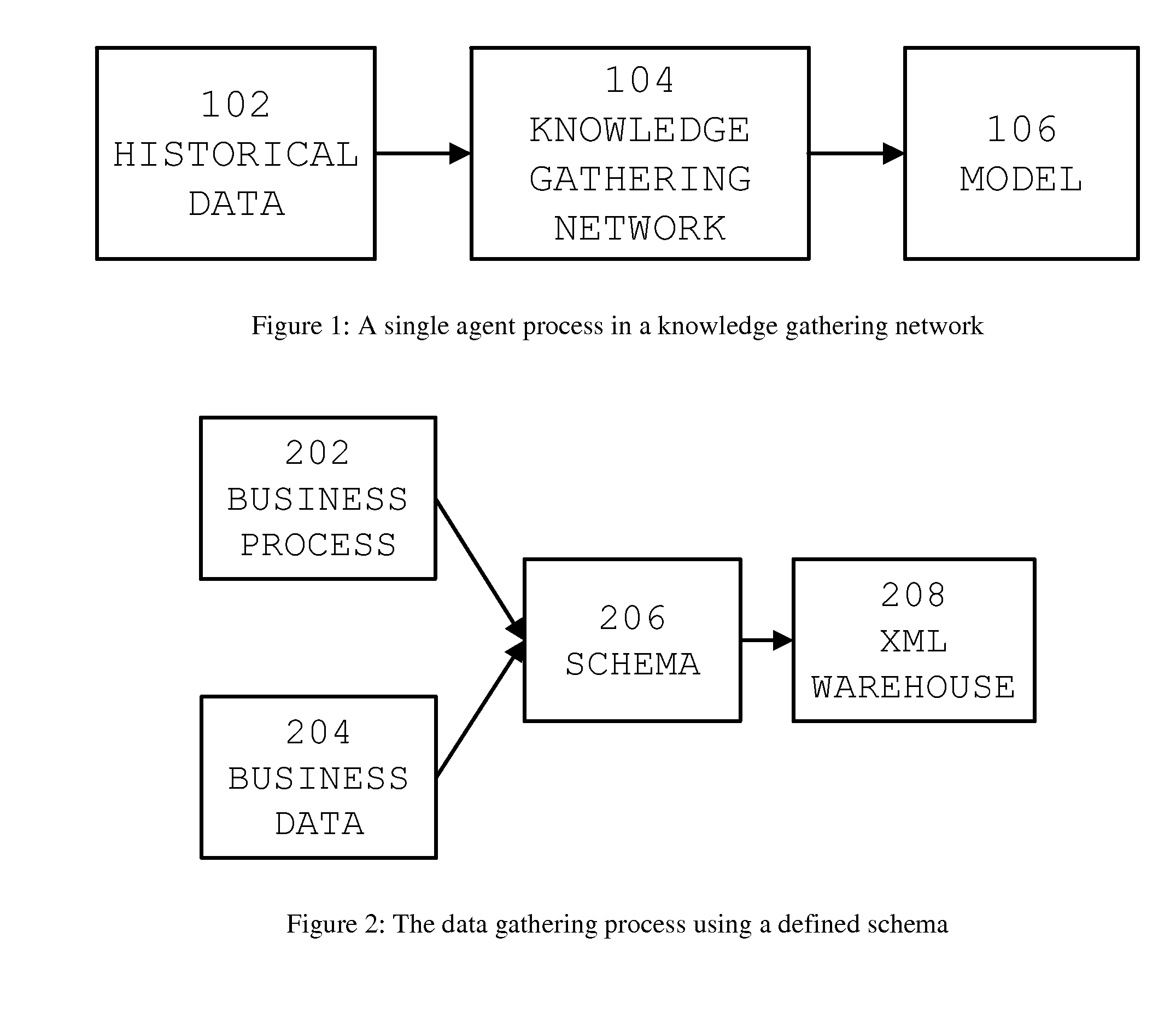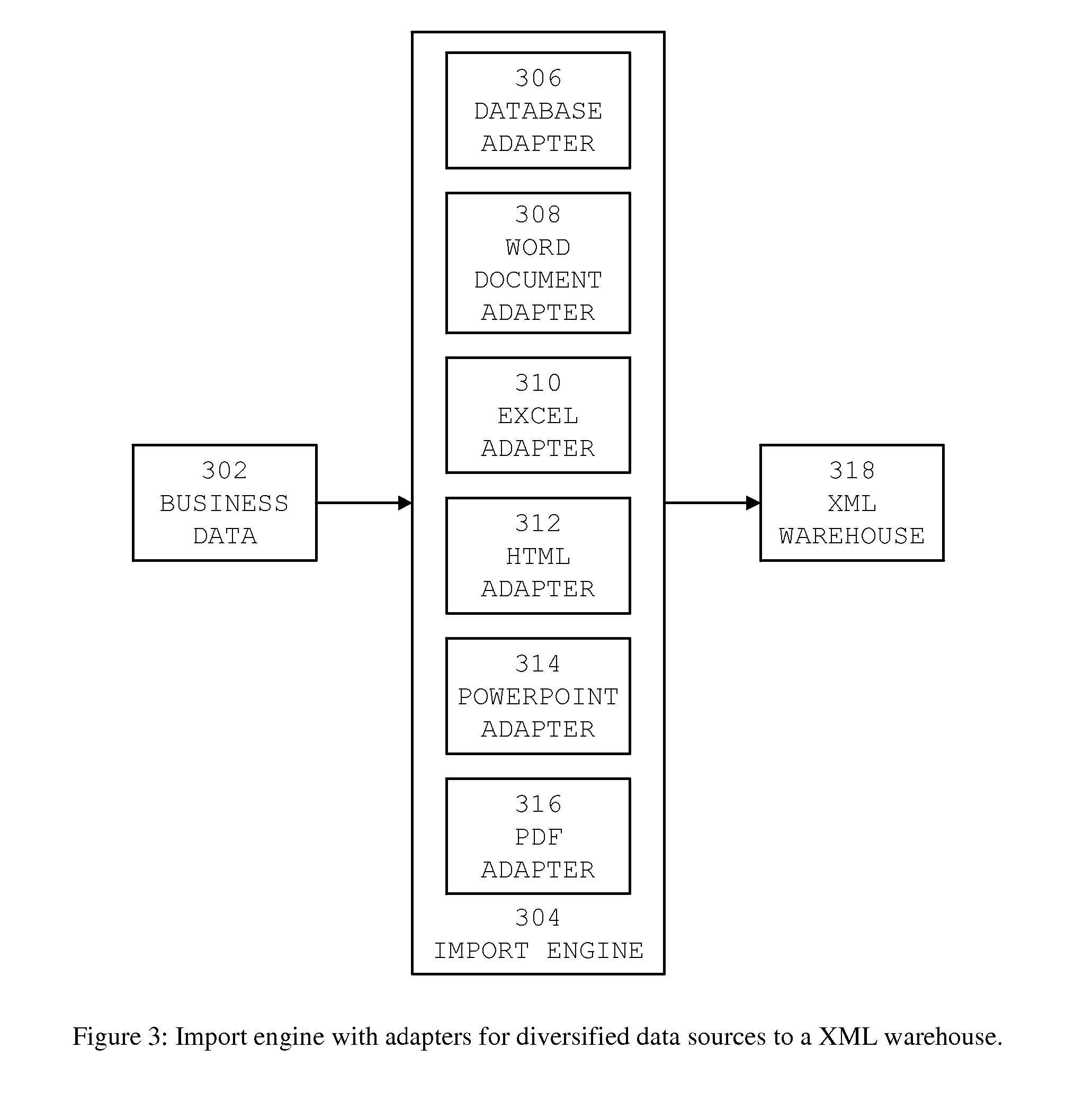Knowledge pattern search from networked agents
a networked agent and knowledge pattern technology, applied in the field of knowledge pattern search from networked agents, can solve the problems of not being useful for many applications, not being able to find many applications, and being unable to find information, etc., and achieve the effects of avoiding the use of a single agent, and avoiding the use of multiple agents
- Summary
- Abstract
- Description
- Claims
- Application Information
AI Technical Summary
Benefits of technology
Problems solved by technology
Method used
Image
Examples
Embodiment Construction
[0021] The invention include five parts
Part 1: Knowledge Gathering Network
[0022] In this part, a knowledge gathering network is a total view of information, knowledge and objects that are engaged in a business or knowledge management process (202). Knowledge Gathering Network (KGN) is a XML based knowledge gathering, creation and dissemination system (104, 1002) that mines, learns and discovers knowledge patterns from historical data (102). The knowledge patterns are stored as a model (106) locally in the agent. It contains the following components:
[0023] Component 1—Gather Data (1102): defines at a high-level how business data (204, 302, 602) is organized and flows into a business or knowledge management process (202). A XML data schema or ontology (206) describes how concepts are hierarchically organized in the process to store them into an XML Warehouse (208).
[0024] Component 2—Import into XML Warehouse (1104): ETL tools in the import engine (304) include adapters for extrac...
PUM
 Login to View More
Login to View More Abstract
Description
Claims
Application Information
 Login to View More
Login to View More - R&D
- Intellectual Property
- Life Sciences
- Materials
- Tech Scout
- Unparalleled Data Quality
- Higher Quality Content
- 60% Fewer Hallucinations
Browse by: Latest US Patents, China's latest patents, Technical Efficacy Thesaurus, Application Domain, Technology Topic, Popular Technical Reports.
© 2025 PatSnap. All rights reserved.Legal|Privacy policy|Modern Slavery Act Transparency Statement|Sitemap|About US| Contact US: help@patsnap.com



